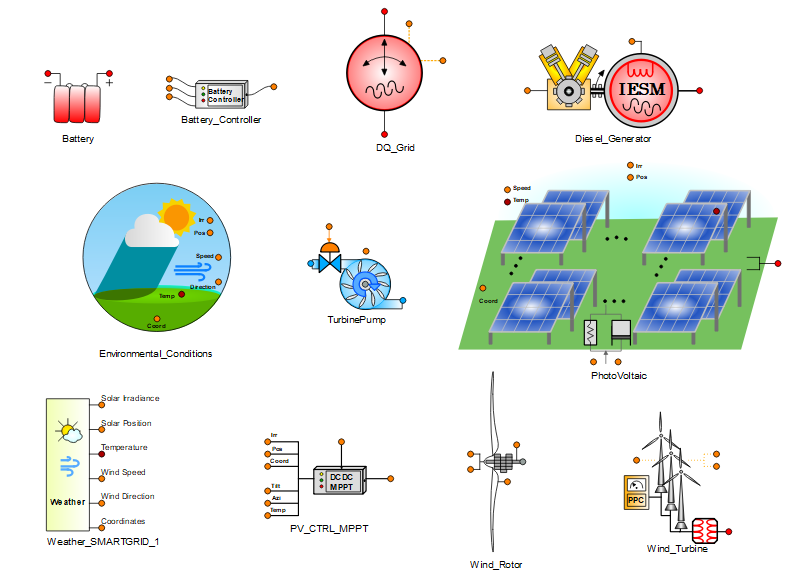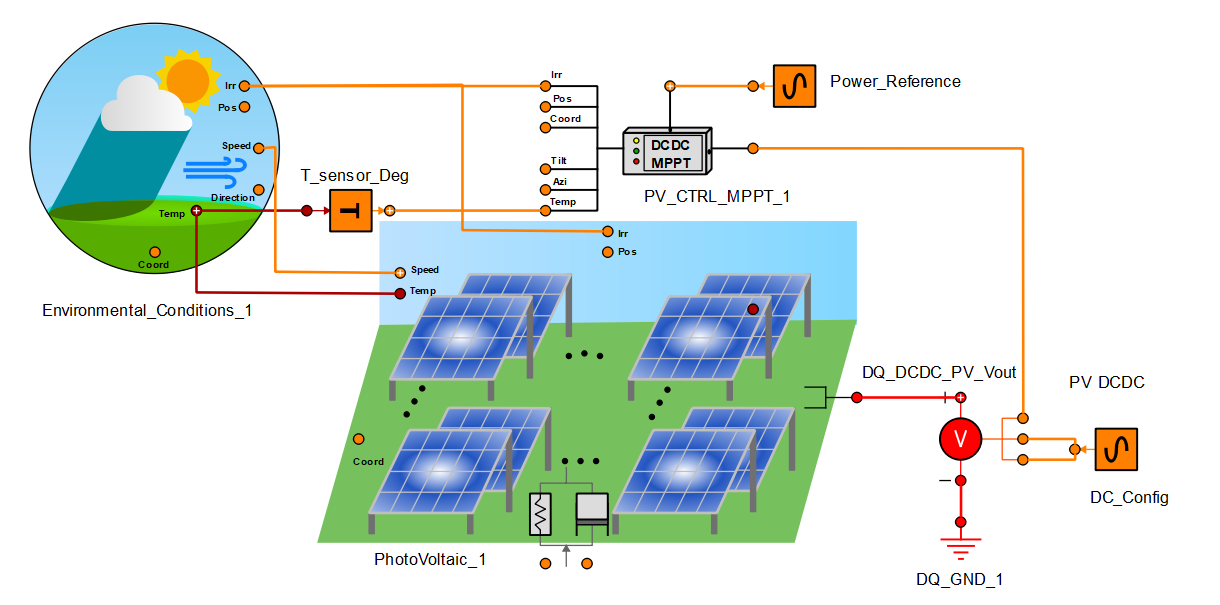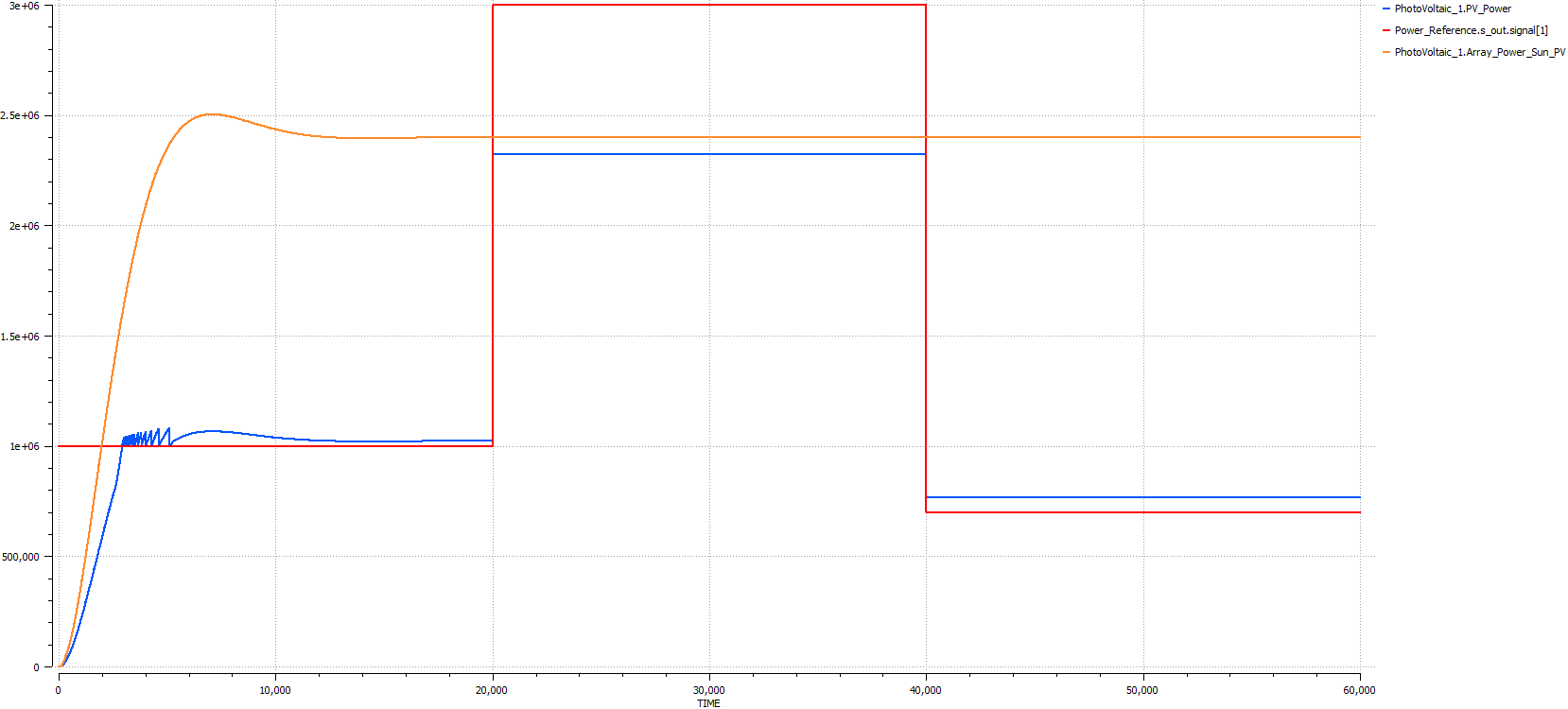SMART-GRID Toolkit
Last Releases
2.0.2, April 2024
2.0.0, December 2022
User Cases
Product Sheet
Status
Commercial toolkit, available for sale and project development
Description
SMART-GRID library allows users to model and simulate micro and smart grid systems, including energy conversion from renewable sources. The toolkit aims to provide a tool for energy balance systems in small, medium and big systems, analyse the power balance and simulate different production-consumption scenarios.
The toolkit is formulated according to long-term transient and steady approaches. For this reason, the electric connections use the ELECTRIC-DQ toolkit as a natural counterpart, even though nothing prevents it from combining with other electric simulation domains with the expected reduction in performance.
Renewable energy components in the library can be understood as renewable resources (sun irradiation, wind, water flow…) to electric energy. All of them are based on performance curves, defined through tables and interpolation methods. Most of them expect an electric voltage phasor from outside and will return an electric current phasor.
For the environmental conditions simulation, four main variables are considered: Temperature, sun irradiation and position or wind speed, among others.
Apart from the natural connection and dependency of ELECTRIC-DQ (PHASOR), SMART-GRID is also designed assuming close interaction with other STANDARD libraries like CONTROL, MECHANICAL, THERMAL, ELECTRICAL. Additionally, connected with HVAC will create a powerful tool for smart building modelling and simulation, thermal efficiency or distributed power generation.
Components
The library comprises the following components:
- Photovoltaic panel
- Photovoltaic Maximum Power Point Tracking (MPPT) controller
- Battery and battery controller
- Wind rotor
- Wind turbine
- Diesel generator
- Hydraulic turbine
- Hydropower system
- Environmental conditions
Palette of SMART-GRID library symbols:

Photovoltaic MPPT Controller
This example illustrates how to reproduce those curves running EcosimPro parametric experiments. Since the study is focused only on photovoltaic panels, no more components nor even controllers are included in the scheme. Only PV panels connected to an ideal DCDC power converter supply under certain environmental conditions.
Photovoltaic panels for power generation with SMART-GRID:

The reference is increased to 3MW until 4e4 seconds and finally it is set to 0.7MW until the end of the simulation time. It can be observed that the MPPT controller is able to control the power and follow the track reference when the set point is 1MW or 0.7 MW, but for 3 MW the panel deliver the maximum available power lower than the reference. The behaviour of the systems matches expected behaviour, curtailing during first and third scenarios and delivering as much power as possible (equivalent to MPPT mode) during second scenario.

The power reference is maintained equal to 1e6 W until time = 2e4 seconds, and then the reference is increased until 3MW, above sun power, until time = 4e6. Finally, power reference is decreased to 0.7e6 W until time = 6e6 seconds.